ZX Spectrum Clone, Czechoslovakia, 1987-1990
The Didaktik Production Cooperative was formed in Czechoslovakia in 19711. It was based in the town of Skalica, just on the Slovak side of the Czech/Slovak federal border. As their name suggests, Didaktik’s initial focus was education. Their Alfa and Beta micros were used by many schools in the region. These were enhanced clones of the PMD 85 micro developed by Tesla.

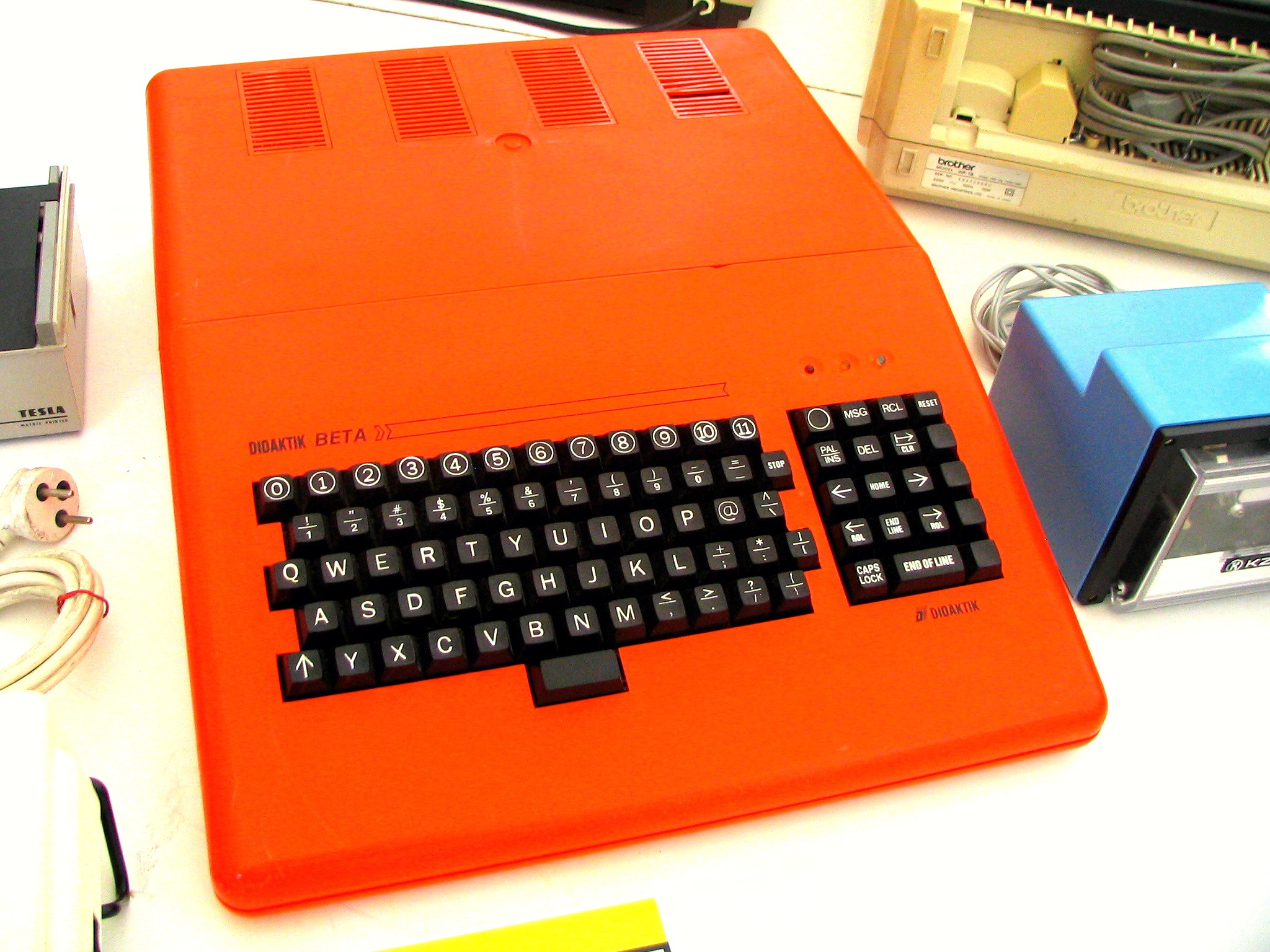
The Czechoslovakian Tesla company was founded in 1946 as an amalgamation of nationalised engineering firms, among them the local branches of foreign companies including Philips and Siemens. The name was originally chosen to honour American-Serbian inventor Nikola Tesla. Representatives of the Yugoslav government were present at the foundation ceremony. A few years later, an ideological falling-out lead to the name being hastily retconned. It now meant “TEchnika SLAboproudá”, “low-current technology”.
The many Tesla branches were responsible for the design and manufacture of all types of electronics within Czechoslovakia, both military and consumer, including televisions and radios. These in turn used domestically-produced components such as transistors and eventually integrated circuits. Tesla produced version of the standard 74-series logic chips and even a clone of the Intel 8080 CPU. This would be used in the PMD micros, designed and built by Tesla Piešťany2.
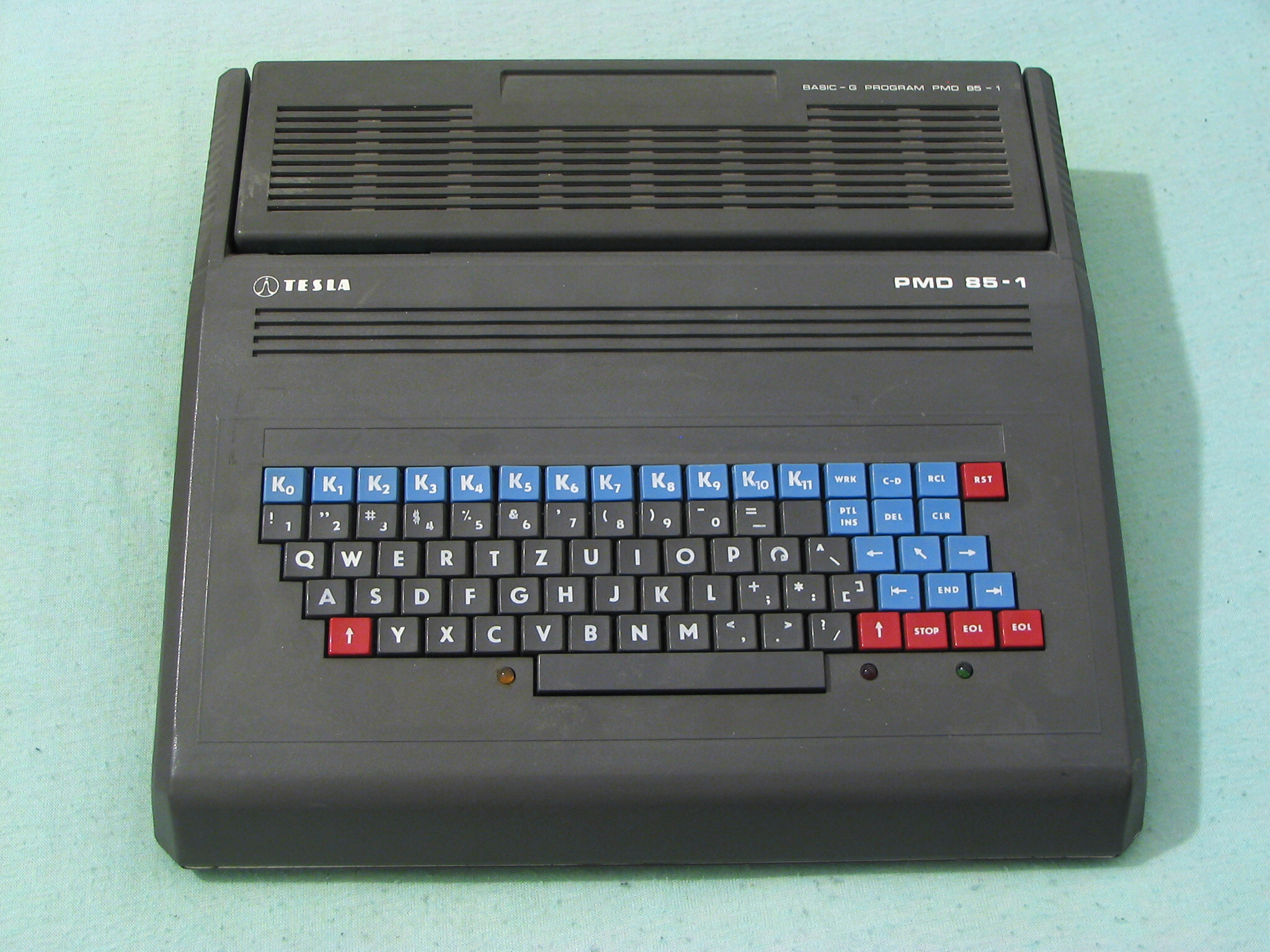
Didaktik would seek inspiration for their next machine – to be called the Gama, naturally – from further afield.
The Spectrum had become the most popular home micro in Czechoslovakia for many of the same reasons it had succeeded elsewhere in Europe. It was relatively cheap, readily available, and had plenty of attractive software. As Amatérské Radio3 wrote:
The main factors in establishing home computers are their cost and software availability. There is plenty of awareness of these two requirements overseas and thus foreign companies put a lot of effort to address these matters. This is reflected in this country by the fact that the most popular home computer makes are the various Sinclair company models.
The rubber-keyed 48K’s small size also undoubtedly played a role in its popularity. While you could find Spectrums for sale in state-run shops such as the foreign currency Tuzex4 stores, it was more likely to have been brought into the country by deep-pocketed workers returning from the West, either for family or for sale on the black market.
Nevertheless, the machines remained hard to find and out of the reach of most of the population. Meanwhile, domestic computer magazines such as Mikrobaze carried articles about the Spectrum, along with BASIC listings and the schematics for hardware add-ons, driving interest and demand.
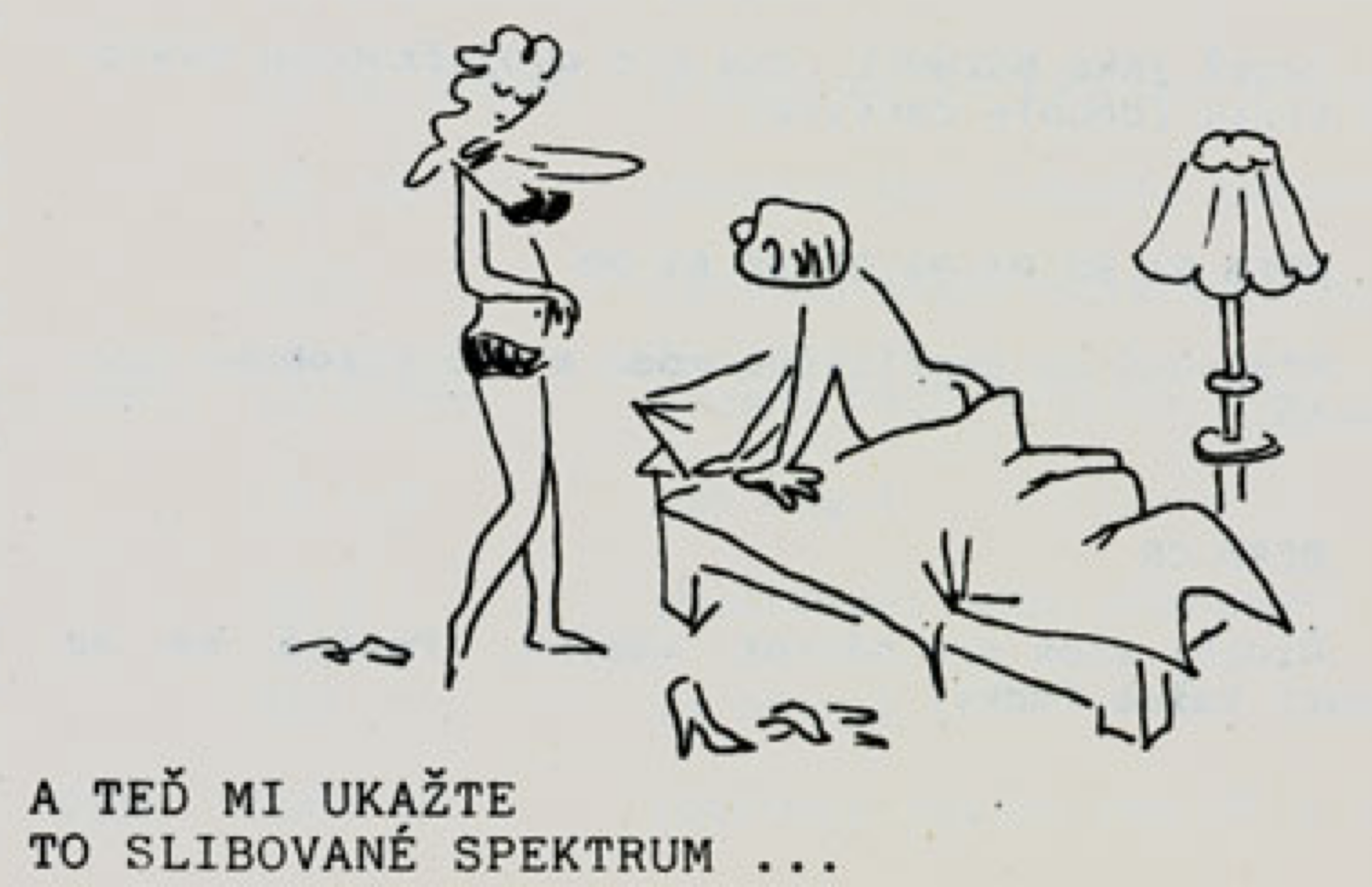
The Gama was designed and put into production in a matter of months in late 1987. It’s release was accompanied by a television advertising campaign5.
Although cheaper than an imported Spectrum, the price was still relatively high, and availability was limited. Mikrobaze6 carries a contemporary account of the tribulations facing potential buyers:
When a shipment of 50 Didaktik Gama computers was supposed to be delivered to the store in Spalená Street in Prague at the pre-Christmas market, a queue began to form in front of the store as early as 6 o’clock in the morning. At 9 o’clock there were about 35 eager citizens standing in line. The last … entered at about 12:30 pm.
For security reasons, only 15 people could wait inside the store. As always with extraordinary events, the power of human solidarity was shown here - those waiting in the store argued with those outside. It was above zero, but an unpleasant wind was blowing.
At 4:10 pm they finally brought the desired computers. The sale started at 4:20. It is unfortunate that not everyone could be served that day, because it takes experienced sellers about 10 minutes to demonstrate and try out one Didaktik.
Not sure how I’d feel if my chance to buy the computer was missed because the previous chap’s trial game of Hungry Horace took too long.
Taking a look
But if you were one of the lucky ones, this is what you would have got.
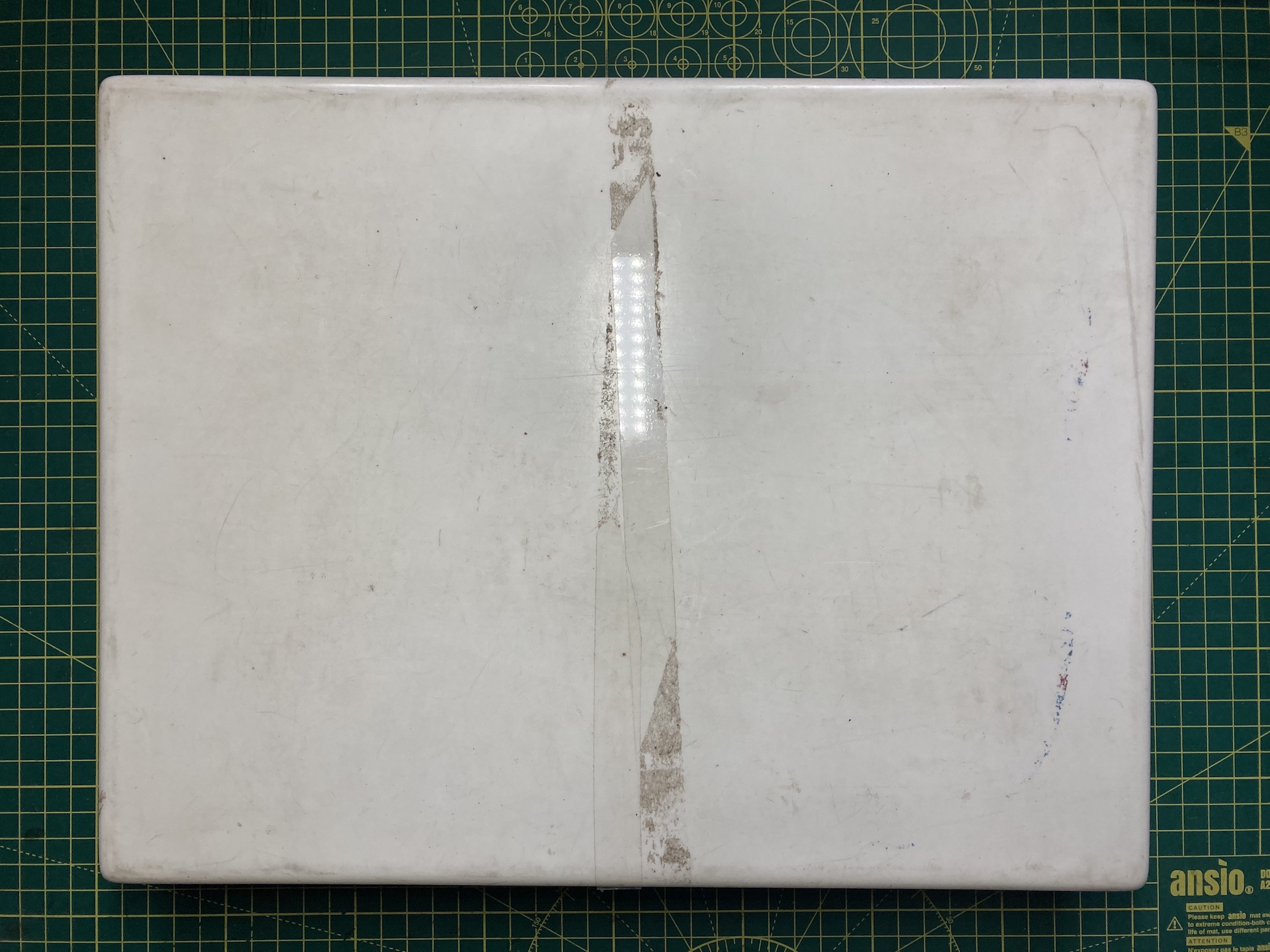
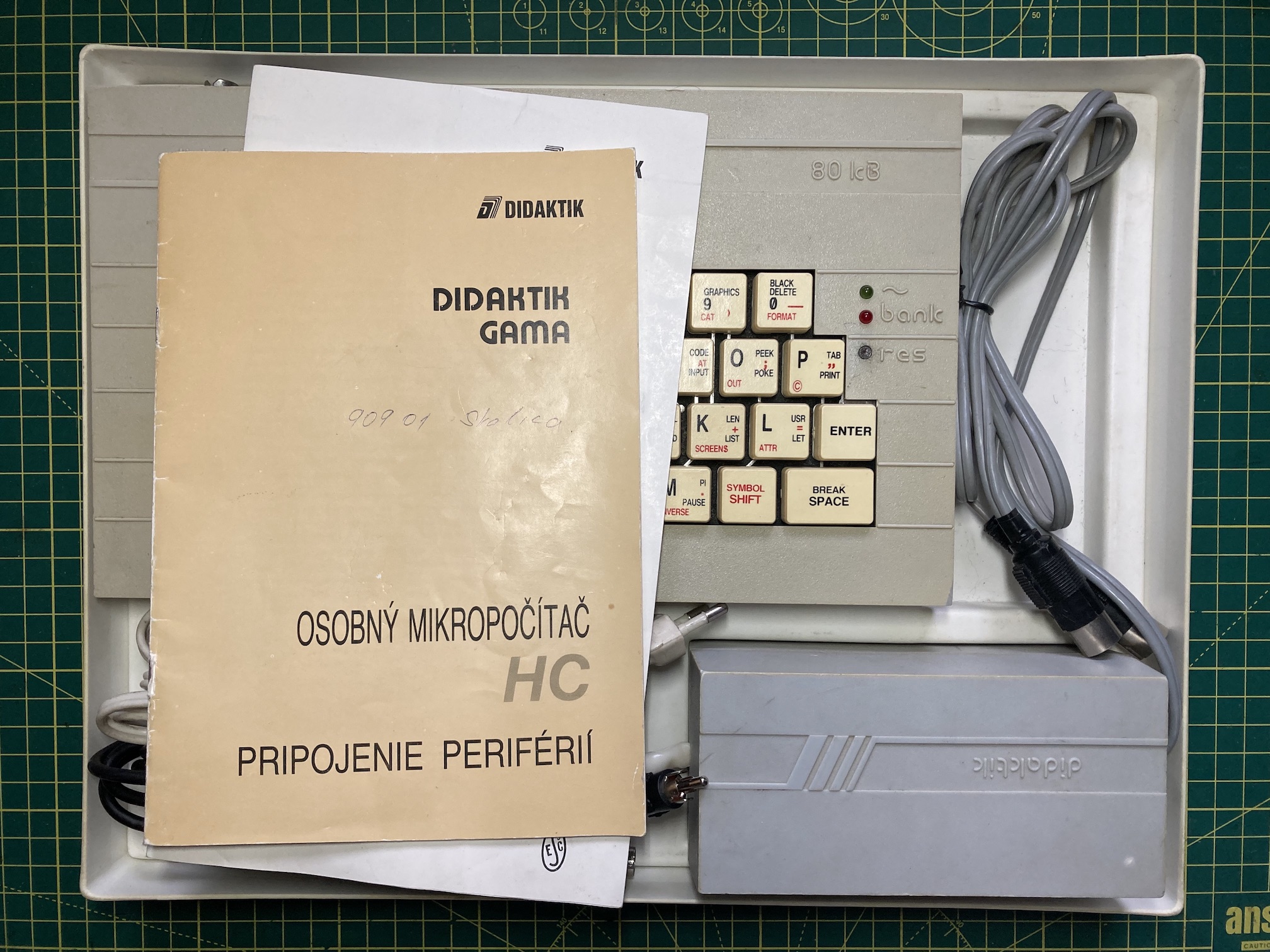
Included are two booklets, the “Zárucny List” (“Warranty Letter”) and the “Pripojenie Periférií” (“Connection of Peripherals”) manual. You can find scans of these on archive.org here, and an English translations in the Archive.

This is the ‘89’ revision of the machine, the 3rd produced. The original ‘87’ and updated ‘88’ versions came in black cases. It’s a shame none were produced in blue or orange cases like the Alfa and Beta.
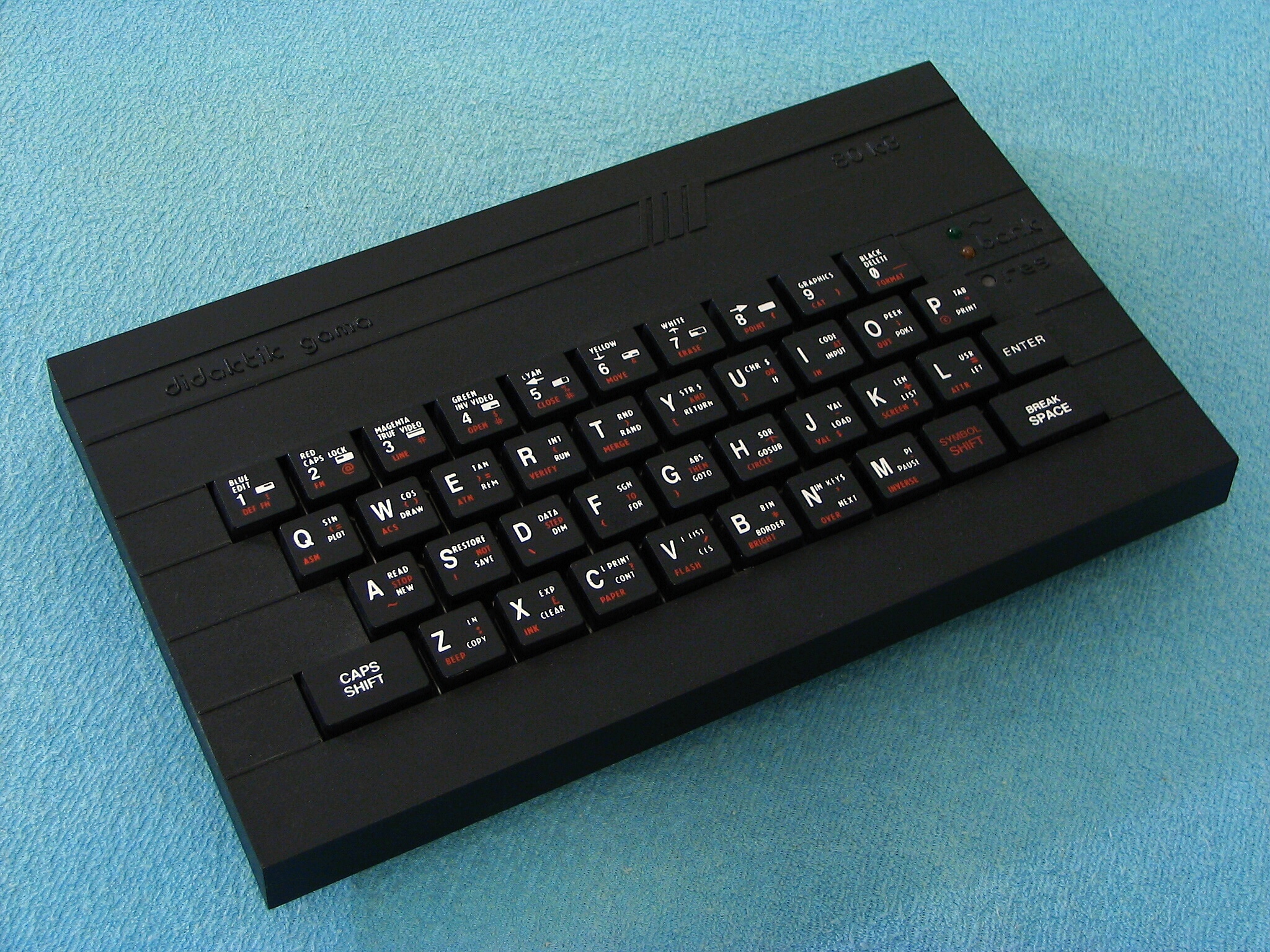
The keyboard is probably on a par with that of the Spectrum+, and of course the keys carry all the usual BASIC keywords. The red LED is marked “bank”. Below it is the recessed reset button. From the amount of pencil on and around it, it’s seen some use.
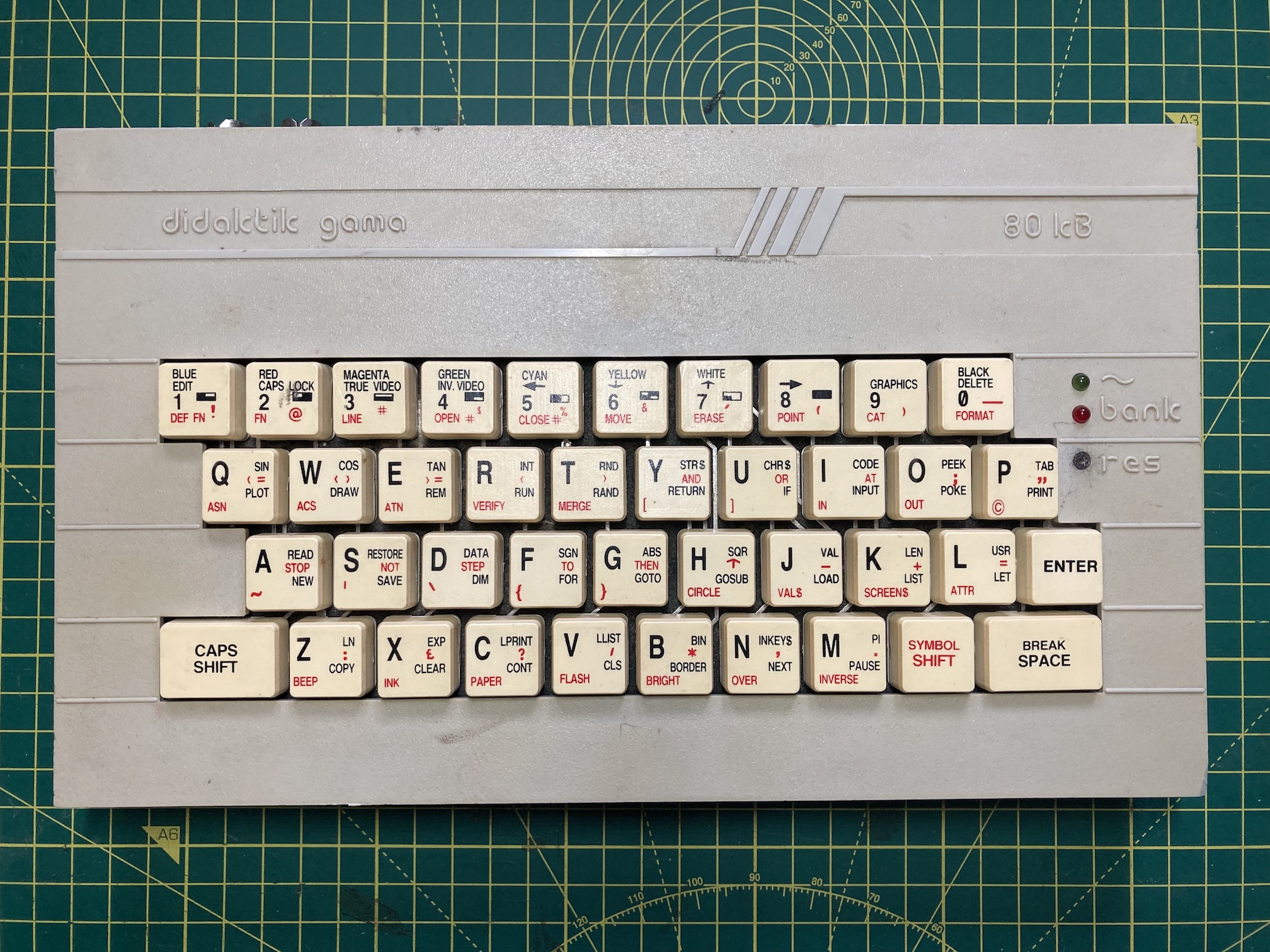
At the back of the machine, starting from the right, we have RF and composite video out sockets. The 5-pin DIN carries 5v and 12v DC, along with cassette data in and out. The cable from the power supply has a second tail which carries the cassette lines to a second DIN. The expansion connector is compatible with the Spectrum (less a couple of voltage lines) and benefits from being an actual edge connector, as opposed to the non-standard connectors present on many other Eastern Bloc Spectrum clones. Finally we have a keyed 30-contact FRB connector which acts as a parallel port.

Opening the Gama up, the first thing you notice are the lovely turquoise chip sockets. The CPU is a ST Micro Z80A with a 1990 date code. There are images elsewhere online7 which show the machine using the East German U880, usually in its distinct white ceramic package. The choice of which CPU to use must have come down to what stock was available for that production run.
Along the bottom of the board is 16K of DRAM as 8 Fujitsu 8118 chips with 83 date codes, and above them another 64K as 8 Soviet “KR565RU5G” (Cyrillic: “КР565РУ5Г”8) chips with 88 date codes. The Gama has a total of 80K, with the upper 32K swappable between two banks, as indicated by the red LED next to the keyboard. The Motorola and Tesla logic chips in the bottom right corner manage the banking. It’s worth noting that this board contains a mix of metric (Soviet) 2.5mm and imperial (Western) 2.54mm pitch components.
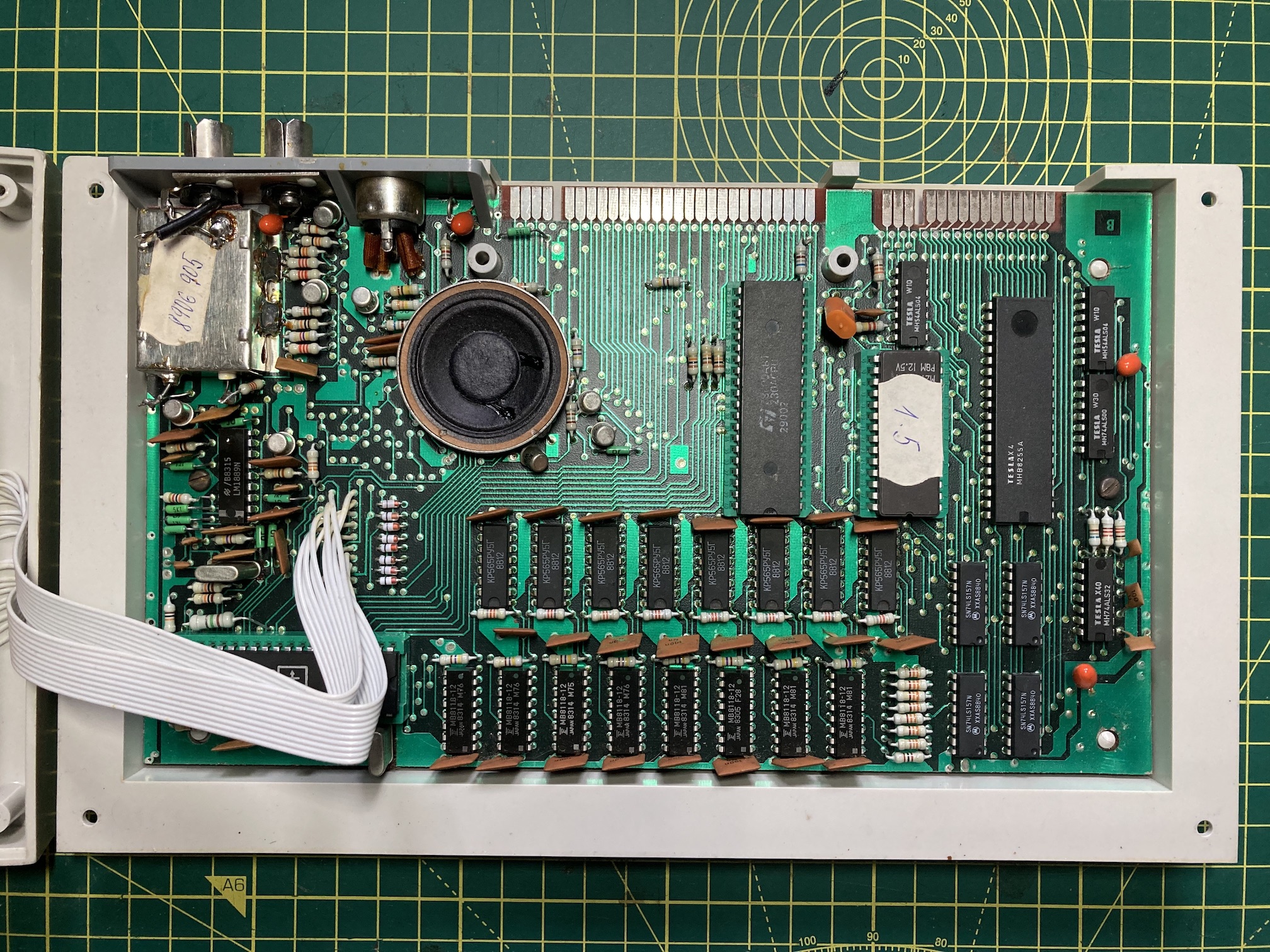
The Tesla MHB8255A at the top left is a clone of the Intel 8255 Programmable Peripheral Interface chip. One port is used to control the bank switching, while the others are exposed through the smaller FRB edge connector.
To the top left is the shielded RF modulator. A LM1889N handles encoding the video signal.
But what glues all these components together and generated the video signal? Hidden in the bottom left corner, underneath the keyboard connection wires, we have…

…a genuine Ferranti-manufactured Spectrum ULA. This is the 6C001E-7 variant with an early 1987 date code.
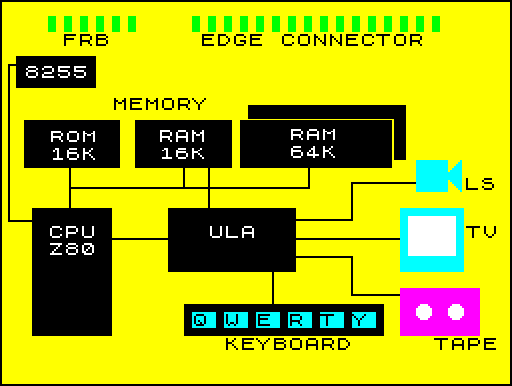
The ULA
The use of a genuine ULA by Didaktik is, as far as I’m aware, unique among Eastern Bloc Spectrum clones. While much of the interest in these machines comes from the innovative technical ways in which their designers replicated the behaviour of the ULA, the presence of the genuine article is interesting in it’s own right.
Chris Smith’s excellent How to Design a Microcomputer9, the Bible for all things ULA, tells us that the E-7 variant was first produced for the Issue 4A Spectrum motherboards in 1984. It would be the final revision, with all previous quirks corrected, used in all subsequent 48K machines. But by the time the first Gamas were produced in late 1987, the Sinclair brand had passed on to Amstrad. Production of previous Sinclair machines had ceased in favour of the new +2, which used the 48-pin ULA from the short-lived Spectrum 128K10.
At the same time, there was still a lot of new old stock available. Massive over-production for Christmas 1985 had lead to the financial troubles which ultimately saw Sinclair selling out to Amstrad. Those machines still existed, unsold, and would turn up in unexpected places, such as as this Spectrum+ with the serial numbers filed off sold by the Yugoslavian computer company Iskra Delta11 and available briefly in Czechoslovakia.
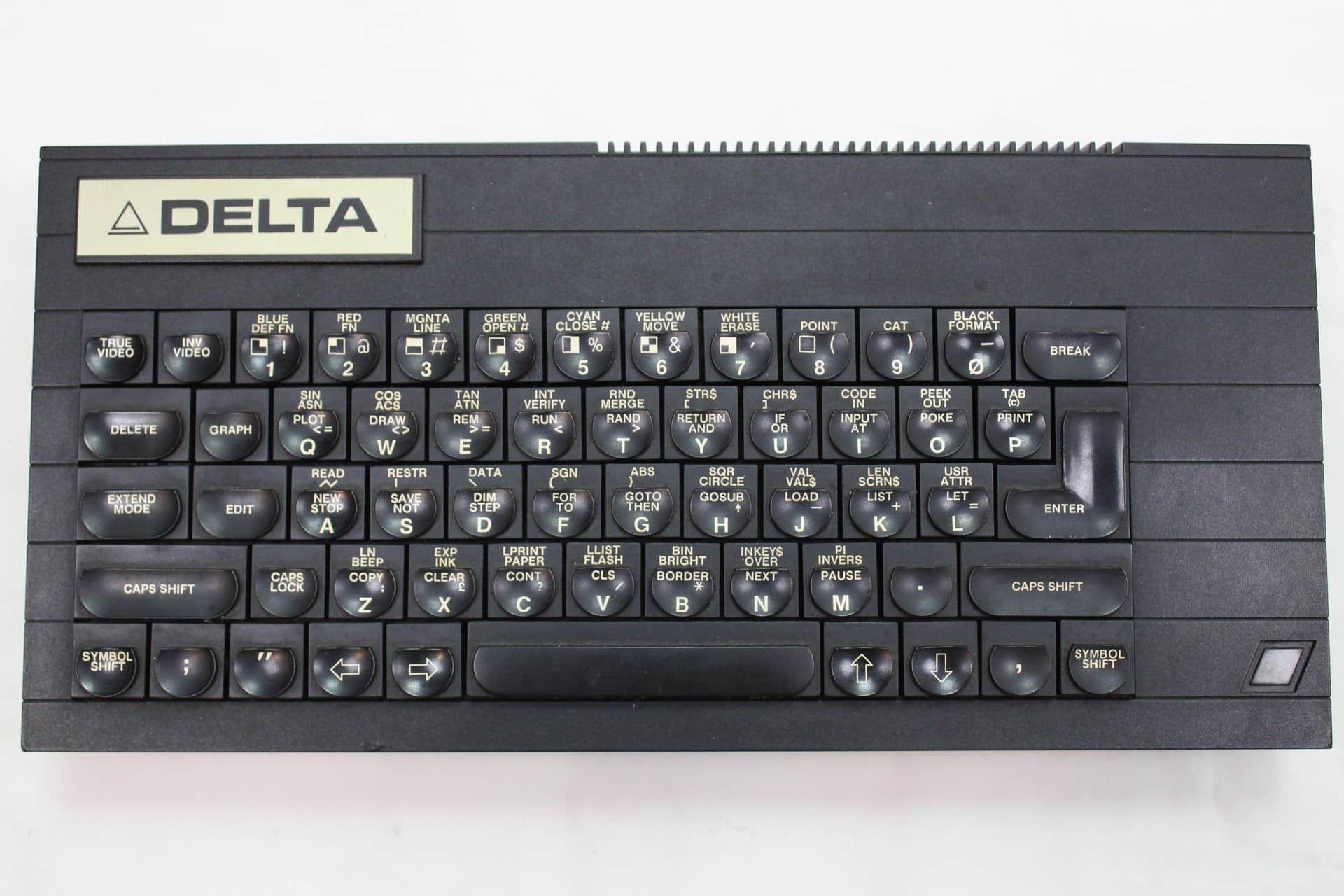
There was still a demand for the older ULAs. There were tens of thousands of 48K Spectrums in homes across Europe, many of them in need of repair. In addition to reclaimed components and old stock, the E-7 ULAs continued to be manufactured to meet this demand.

The “ULA Gallery” maintained by Byte Delight includes examples with date codes up to late 1989, by which time Ferranti’s semiconductor business had passed on to Plessey. The 1987 version we have here is therefore not unusual. It’s presence in a non-Sinclair machine sold in a foreign market is.
In his introduction to the “Connection of Peripherals” manual we saw earlier, Didaktik’s lead engineer Viktor Klemon writes:
At the end of 1987, after a short but intensive production preparation, we commissioned the production of the Personal microcomputer Didaktik Gama. By the end of 1988, we produced 8,000 units and we expect a significant increase in production - up to 25,000 units in 1989.
I have no evidence of whether or not the later target was met12, but even if only the 8000 unit figure is correct, that is a lot of ULAs to source from somewhere13. It would be interesting to find out whether these were bought on the open market, or whether there was a deal of some type struck between Didaktik and either Amstrad or Sinclair Research to provide the ULAs. That would make the Gama at least a semi-official clone.
The most interesting – but also most unlikely – lead I’ve found in this direction14 introduces disgraced tycoon Robert Maxwell to the mix. Maxwell was originally from Czechoslovakia, and during 1985 was considered the front-runner to purchase Sinclair15, so there is a strong connection, but what his role was in the deal, if indeed there was one, is unclear.
Trying it out
Connecting the composite cable and powering the machine on, we see:
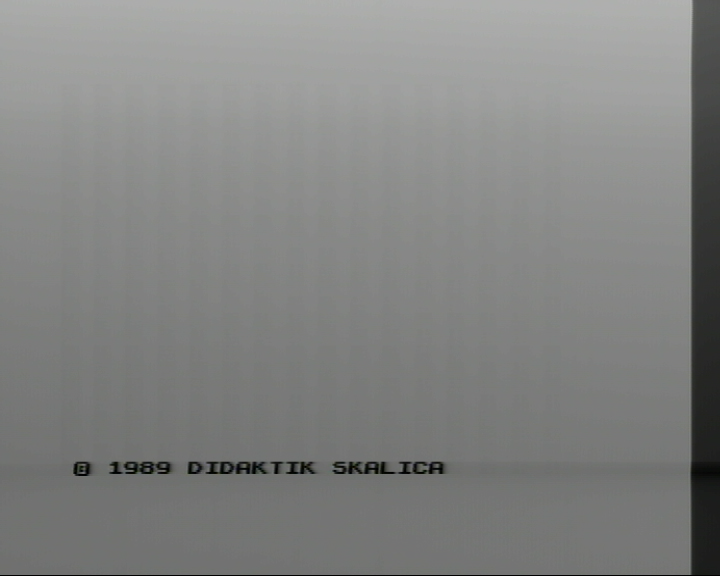
The altered copyright message and the chunkier font belie what is a lightly modified version of the Sinclair 48K ROM.
Unfortunately you cannot ignore the muddy quality of the image, or the fact that it is black and white. A cursory Google and a bit of prodding-around with a multimeter suggests that the signals coming out of the LM1889N are on the weak side. I’ll try to fix them in a future post.
Also in a future post we’ll revisit Didaktik and see how they were to inadvertently have a lasting effect on the world of Spectrum clones.
Additional Resources
- Various resources for the Gama (and other Spectrums) including schematics: https://z00m.speccy.cz/?file=hardware.
- Video of someone using and purchasing a Gama: https://www.youtube.com/watch?v=_uTkHJGkyDM.
Notes
-
https://dennikn.sk/287802/skvely-slovensky-pocitac-prisiel-neskoro/ ↩
-
Issue B 1989/1. Original and translated versions of the article. ↩
-
A video about Tuzex on YouTube: https://www.youtube.com/watch?v=3nQUw-D89V0. In Czech. No Spectrums to be seen, but look out for the Atari 520ST at 8:16. ↩
-
The +2A and +3 would use redesigned gate arrays. ↩
-
The Delta was sold in Czechoslovakia before the Gama. ↩
-
“The only exception here was the Didaktik Gama, which, however, has not been produced since April 1990 (around 45,000 units were produced and sold)” http://bruxy.regnet.cz/web/8bit/CZ/didaktik-m,-pocitac-za-mene-nez-3000-korun. ↩
-
“They bought a lot of original ULAs somewhere” https://hackaday.com/2014/12/15/home-computers-behind-the-iron-curtain/. ↩
-
From ‘Conan’ http://zxnext.narod.ru/. Amoung other too-good-to-be-true facts cited is a figure of 60,000 Gamas built and sold between 1987 and 1990. ↩
-
See Sinclair User Issue 41 (August 1985) p.5 and Issue 43 (October 1985) p.5 for the rollercoaster ride from “Maxwell Buys 75% of Sinclair Research” to “Maxwell Pulls Out”. ↩